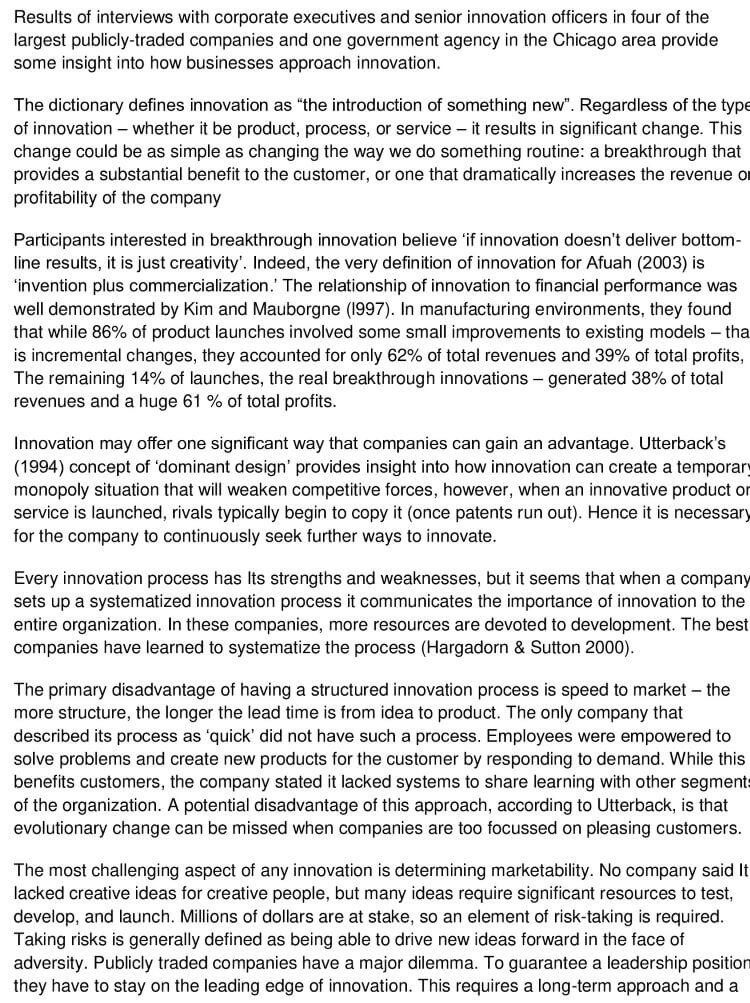Innovation is crucial for business survival and growth in today’s competitive landscape. This article presents a comparative study of various innovation practices, drawing on established theories and research to provide insights into successful innovation strategies. We will explore different approaches to innovation, the challenges businesses face, and the keys to fostering a culture of creativity and risk-taking.
Diverse Approaches to Innovation in Business
Experts offer varying perspectives on effective innovation practices. Afuah (2003) emphasizes the importance of commercialization, defining innovation as “invention plus commercialization.” This highlights the need for new ideas to have practical business applications to be considered true innovations.
Kim and Mauborgne (1997) demonstrate the financial impact of different types of innovation. Their research reveals that while incremental changes contribute to revenue, breakthrough innovations generate a significantly larger portion of profits. This suggests that companies should strive for radical innovations to achieve substantial financial gains.
Utterback (1994) introduces the concept of “dominant design,” explaining how innovation can temporarily grant a company a monopoly. However, competitors quickly imitate successful innovations, emphasizing the need for continuous innovation to maintain a competitive edge. Utterback also cautions against focusing solely on customer needs, as this can lead to overlooking broader market trends and opportunities for evolutionary change.
Fostering a Culture of Innovation
Hargadon and Sutton (2000) advocate for a structured approach to innovation, suggesting that systematizing the process communicates its importance throughout the organization and leads to greater resource allocation for development. They also highlight the effectiveness of teams in capturing and sharing ideas, fostering a collaborative environment where innovation can thrive.
Kahn and Hirshhorn emphasize the importance of psychological safety for fostering creativity. They argue that a culture that tolerates failure allows employees to feel safe taking risks, leading to greater innovation. When employees feel threatened or anxious, their creativity is stifled.
Challenges in Implementing Innovation
Despite recognizing the importance of innovation, businesses face numerous challenges in implementing effective strategies. One major obstacle is determining the marketability of new ideas. While companies rarely lack creative ideas, significant resources are required to test, develop, and launch new products or services. This often involves a lengthy period between initial concept and market launch, requiring patience and sustained investment.
Another significant challenge is risk aversion. Publicly traded companies often face pressure from investors for short-term results, making it difficult to invest in long-term innovation projects with uncertain outcomes. A low tolerance for risk among employees and decision-making committees can also hinder the development and implementation of innovative ideas. Many companies struggle to balance the need for short-term profitability with the long-term benefits of innovation.
Conclusion
A comparative study of innovation practices reveals diverse approaches and common challenges. Successful innovation requires a combination of creative ideas, a supportive organizational culture, a structured process, and a willingness to take risks. Companies that prioritize continuous innovation, foster collaboration, and embrace a long-term perspective are more likely to thrive in today’s dynamic business environment. By understanding the various perspectives on innovation and addressing the associated challenges, businesses can develop effective strategies for sustained growth and success.


